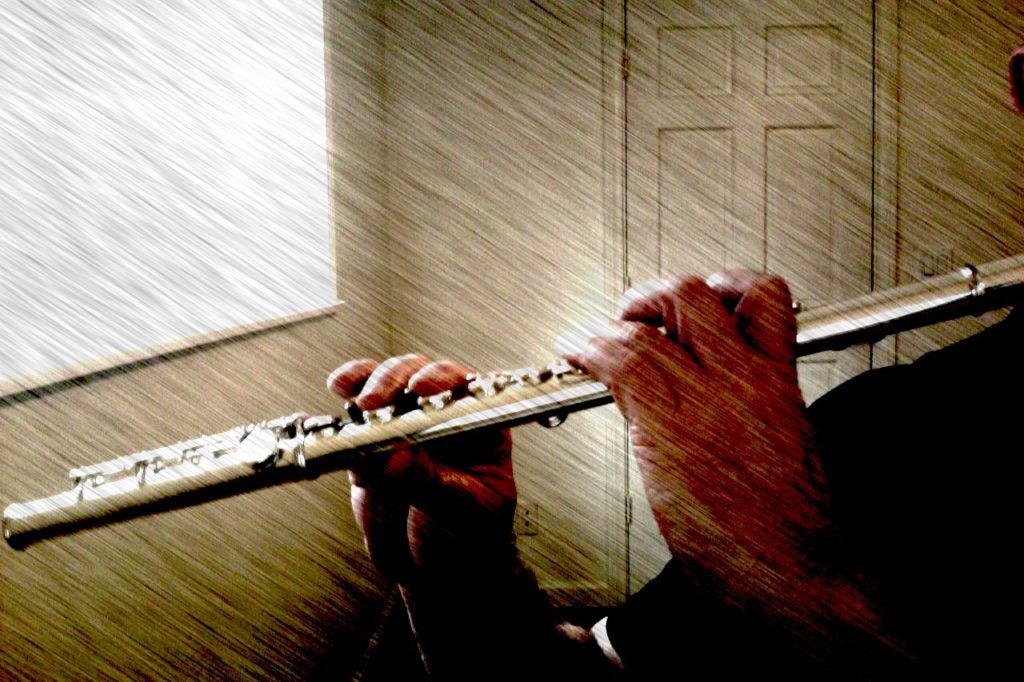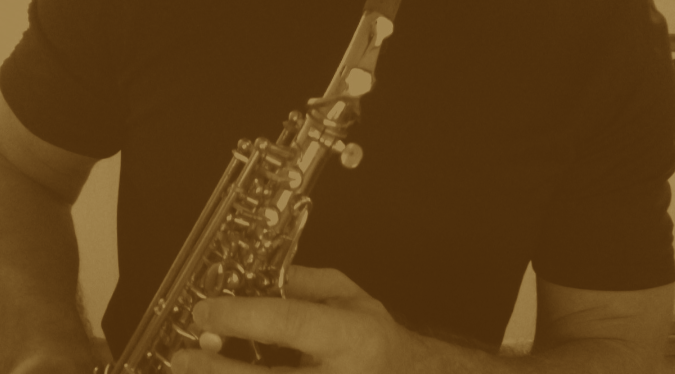
Around 25 years ago, I started noticing a deeply troubling change in my saxophone playing experience. Simply put, I would have days where I just couldn’t seem to get the fingers of my left hand to do what they could so easily and naturally always do before in order to express myself musically.
At first this was a phenomenon that seemed to come and go, but after about 5 years of this “come and go”, I fell rather immediately into a period of complete loss of control of the fingers of my left hand.
The strange thing was that my left hand worked just fine in any other activity…writing, using hand tools, cooking…activities that require a good amount of fine motor skill.
Yet the moment I even touched the keys on any of my saxophones, my fingers would curl up uncontrollably.
I got to the point where I couldn’t even hold the fingers of my left hand down onto the keys of the saxophone, much less play anything resembling music. I had to stop accepting any kind of work playing saxophone, as well as even just enjoying a rehearsal or jam session. I could no longer play. Simple as that.
To say that I fell into a deep despair would be an understatement.
It was after seeing a physician (a very good internal medicine doctor, whose specialty was in diagnosis), that I learned that I most likely had a form of focal dystonia. I went on to get a diagnosis from a neurologist to confirm this.
The term “focal dystonia” was something I’d never heard before. But the symptoms, this type of unexplained loss of skill specific to the act of playing music, was not unfamiliar to me.
I had encountered several other musicians over the years prior to the emergence of my condition who had similar experiences. In fact, one of my closest friends and musical colleagues, a highly skilled and highly accomplished trombonist, was experiencing this same phenomenon with his facial muscles and tongue.
So what is focal dystonia?
I think this definition by the Dystonia Research Foundation sums it up best:
“Dystonia is a neurological disorder that causes excessive, involuntary muscle contractions. These muscle contractions result in abnormal muscle movements and body postures, making it difficult for individuals to control their movements. The movements and postures may be painful. Dystonic movements are typically patterned and repetitive.”
Within the realm of focal dystonia, there are several sub-categories. For those whose dystonic symptoms only appear while engaging in a learned, skilled activity, the condition is referred to as task specific focal dystonia.
This includes things as common as “writer’s cramp” (though I suspect that lots of forms of writer’s cramp are not focal dystonia, but simply overuse, or misuse), to surgeons losing their “hand skills” only while performing surgery, to a condition in the sport of golf known as the “yips”, where the golfer shakes uncontrollably before a shot that is normally “easy” to make.
And within the of category of task specific focal dystonia, there is task specific musician’s dystonia, more commonly known as musician’s dystonia, or simply by its acronym, MD.
And to subdivide even further, there are generally two types of musician’s dystonia: hand dystonia and embouchure dystonia (“embouchure dystonia” includes the facial muscles, tongue, jaw, soft palate, sometimes neck muscles, and even respiratory structures).
The first thing you are told if you are diagnosed as having musician’s dystonia, is that there is no cure. There are a few medical modalities that can be applied (medications, botox injections, etc.), that might lessen the symptoms. But I’ve yet to encounter a musician who became permanently “symptom free” from these interventions.
This is in part, because the “mechanism” of the condition is still largely a mystery to medical science, and hence any kind of “cure” is not to be found.
For most musicians who get medically diagnosed as having musician’s dystonia, the advice is often the same: Switch careers.
Well that’s just something that’s not easily accepted by many musicians. It certainly wasn’t easy for me. In fact, I refused accept it.
For “serious”, life-dedicated musicians (whether professional or amateur), the idea of not being able to express ourselves freely, authentically and skillfully through music is tantamount to losing an essential part of what defines us, and what gives deep meaning to our lives.
So I was faced with my only option: work at making my condition better so that I could restore this essential part of my life.
My path was (and continues to be) long, and the learning (and more important, the “unlearning”) process was not a straight line. At first I tried to improve my symptoms by practicing more. Much more.
But the more I practiced, the worst my condition became.
Then I went in the other direction, deciding to take a break from playing saxophone completely in order to see if I would “forget” the old dystonic patterns.
After not touching the instrument for many months (and being at the point where I just couldn’t stand being away from it any longer), I painfully discovered that nothing had changed. If anything I felt even more “dystonic” and disconnected to the saxophone than ever before.
I tried massage, stretching, exercise, change of diet…just about anything I could to try, to alleviate my condition. Nothing seemed to work even in the slightest.
It wasn’t until I discovered the Alexander Technique that things begin to change. It was in my Alexander Technique lessons that I learned three very important things:
First, musician’s dystonia (like any focal dystonia) is a “whole body/whole person” reaction. It is something that affects the coordination of my entire physical (or more precisely, “psycho-physical) organism. As my general “use” began to improve (my quality of movement, balance, posture, attention, etc.), my dystonia symptoms became noticeably fewer and less intense.
Second, a big part of learning to improve my overall “use” was in developing the skill of conscious inhibition, i.e., the ability to keep an unwanted reaction in check. I learned that by simply “giving myself permission to stop” whenever I felt the rise of a dystonic reaction while playing my instrument made an immediate and remarkable improvement in my symptoms.
Third, I learned the importance of accepting my symptoms just as they were in the moment. In short, I developed the ability to stop “reacting to how I was reacting”. I discovered that I could observe myself more discerningly, more objectively and dispassionately. This was an empowering realization, and became emblematic of my emerging skills with conscious inhibition.
(I was so impressed with the efficacy of the Alexander Technique, that I went on to train to become a certified Teacher, and have been teaching since 2006.)
As I applied this work, I also started doing lots of studying, from neuroscience, to kinesiology, to anatomy/physiology, and more. I formulated lots of exercises, explorations and activities based upon my studies, and spent a good deal of time working things out.
My progress often seemed “two steps forward, one step back”, but that was okay. I’ll accept that ratio. My daily practice sessions transformed from frustration, despair and discouragement, to curiosity, exploration, discovery and delight. The process of improvement itself became deeply satisfactory.
Since then I’ve continued to improve my condition to the point where I can play saxophone now with the skill, confidence, connection and authenticity that gives me joy and satisfaction.
I’ve also had the opportunity to help some other musicians with dystonia to improve their condition, and it is for this reason that I’ve created a page on my blog dedicated to offering this help.
So if you have musician’s dystonia (or suspect that you do), please get in touch with me. I always proceed from a place of love, understanding and safety in addressing this condition.
And if you know a musicians that is struggling with musician’s dystonia (whether with the embouchure or hands), please direct them my way.
There is hope…



